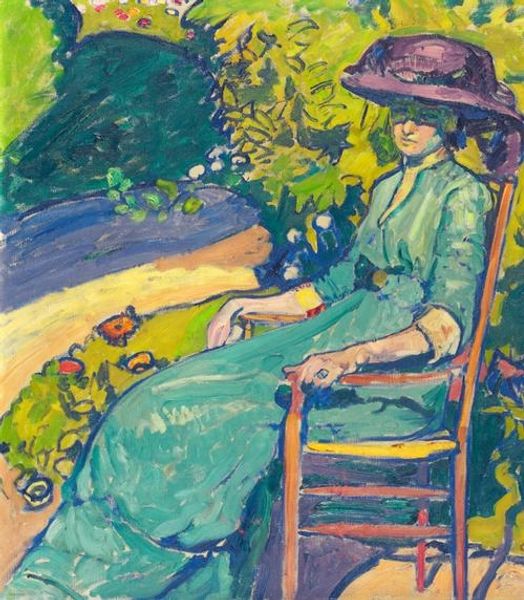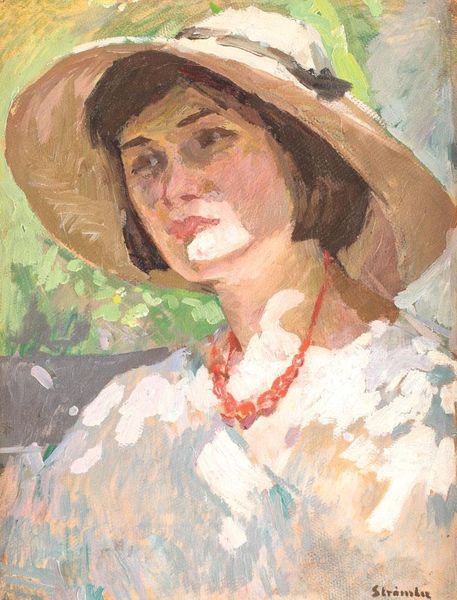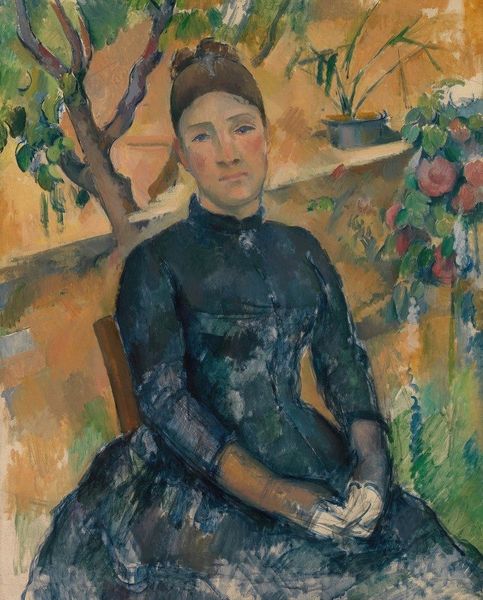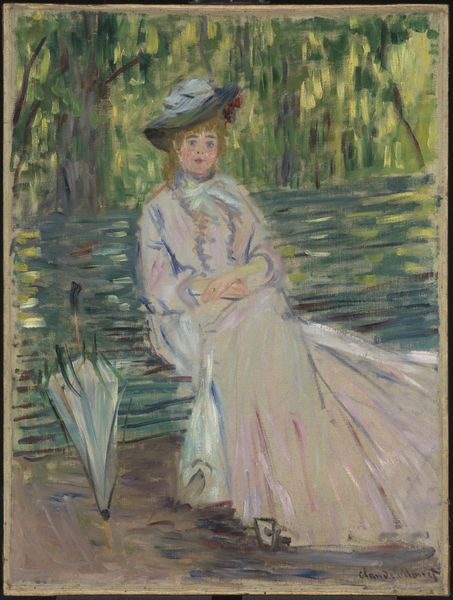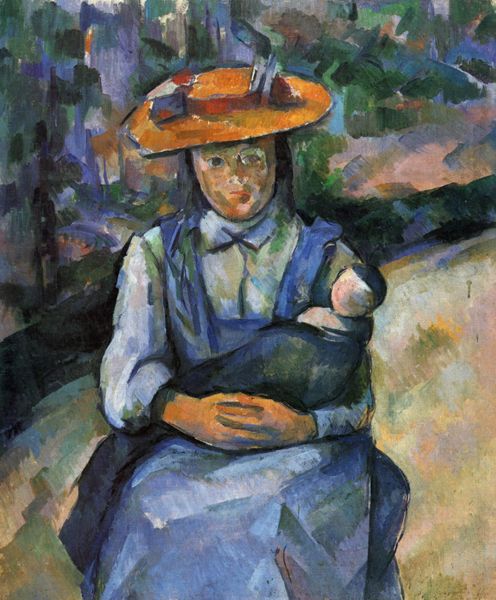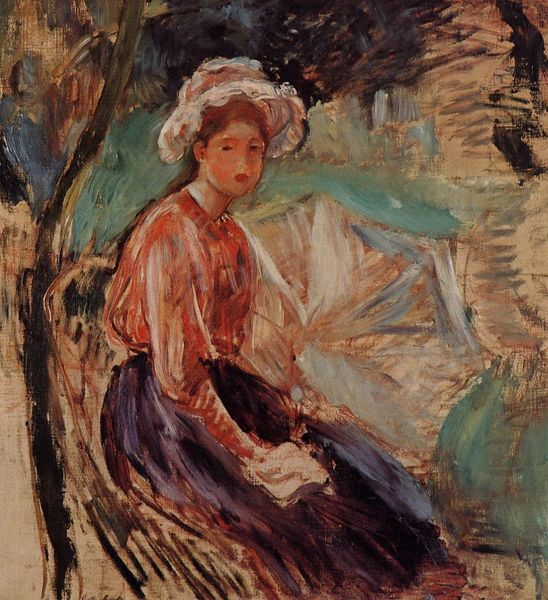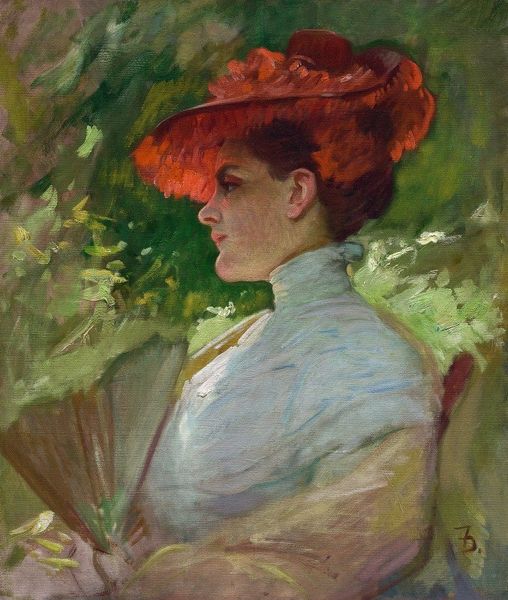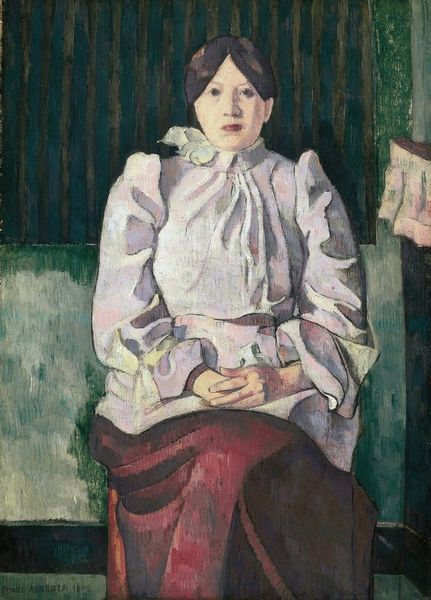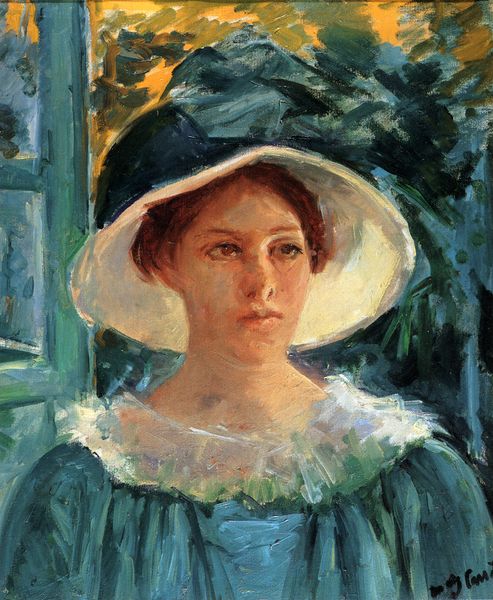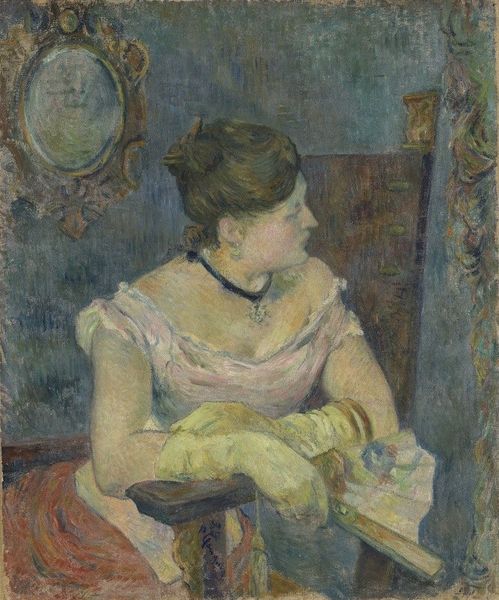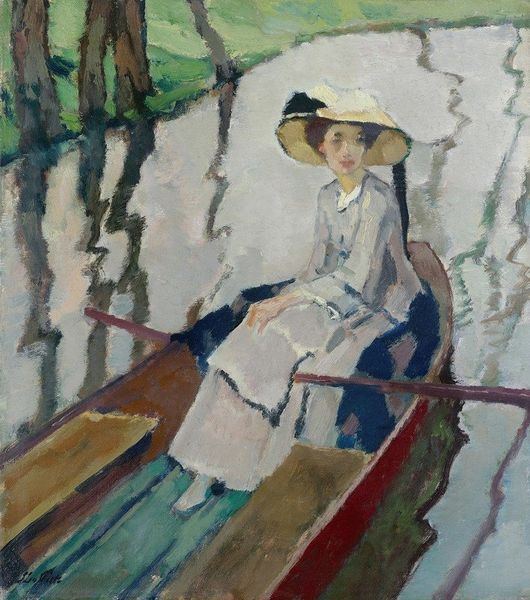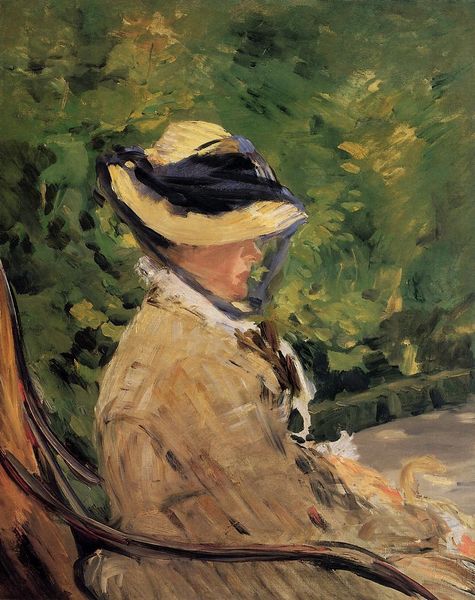
Copyright: Public Domain: Artvee
Curator: We’re looking at Leo Putz’s 1911 portrait, “Portrait of a Lady Under a Green Parasol." Editor: What immediately strikes me is the confident brushwork and the emphasis on green tones—it gives the whole painting a very summery, lush feel, almost bordering on the decadent. Curator: It's interesting that you say decadent. Putz, like many artists of his time, was exploring the boundaries between official portraiture and the more radical, subjective style that we now associate with early modernist movements, heavily influenced by Impressionism and plein-air painting techniques. It challenged academic art circles. Editor: I see that challenge not just in the brushstrokes but in the way Putz seems to relish the texture of the oil paint itself. The thickness in some areas, especially the parasol and the figure's clothing, really emphasizes its materiality. There's something quite honest about how present the medium is. I'd be keen to investigate if he pre-mixed any of those greens himself or if he preferred mixing on the canvas, right then and there. Curator: Absolutely. That spontaneity links directly to shifts in art consumption and the expanding art market. Outdoor painting became increasingly accessible, appealing to both artists and bourgeois society, and Putz navigated this shift with acute awareness, focusing on themes like the emancipated woman enjoying nature. Editor: Yes! And what about the social connotations of the dress? From here, it appears as though the painting’s fashion leans away from rigid forms, toward more soft silhouettes, emphasizing natural curves, comfort and autonomy. The woman's gaze feels pretty confident, which fits with that narrative. Curator: Her confident gaze draws the viewer in, creating a fascinating tension. It speaks volumes about Putz’s skill in capturing not only her likeness but also the societal position that she either occupied or desired to occupy at that time. And how that position reflected the culture of that moment. Editor: All in all, a remarkable snapshot of a period where the tools and textures of art reflect—almost literally—the changing landscape. Curator: Indeed, Putz successfully positions the "Porträt einer Dame unter grünem Schirm" at an interesting historical juncture where artistic ambition, subject matter, and evolving societal roles come together.
Comments
No comments
Be the first to comment and join the conversation on the ultimate creative platform.
